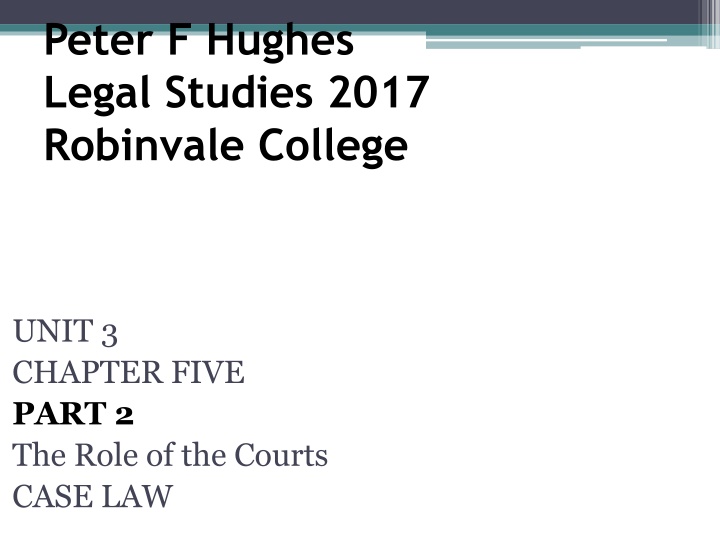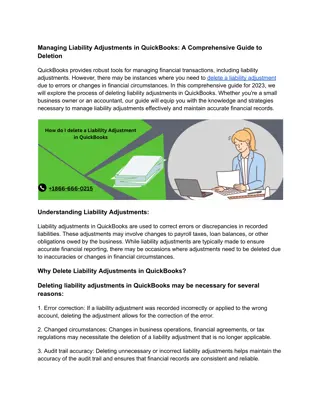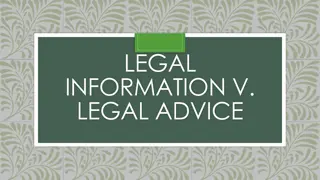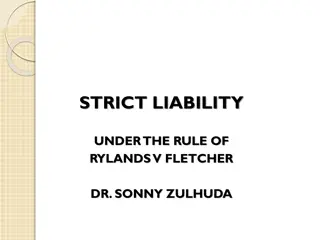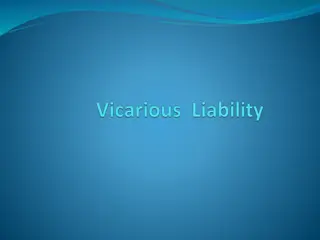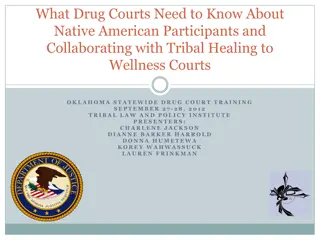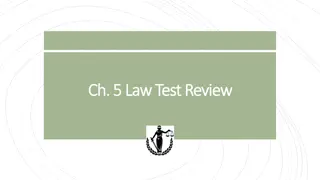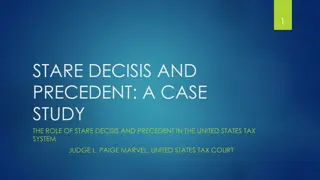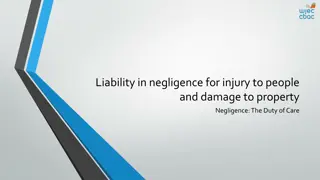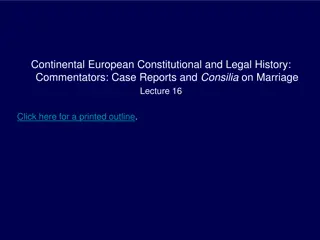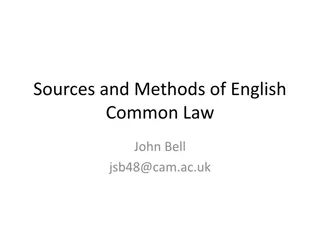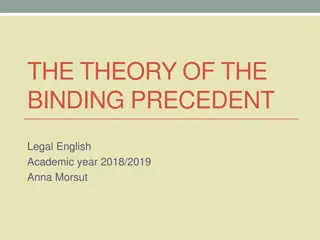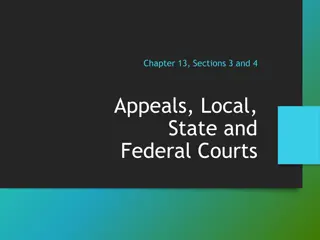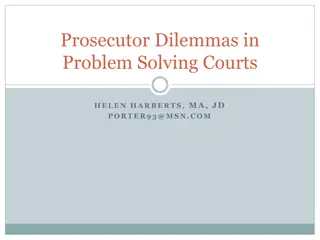Courts' Precedent Influence on Legal Advice Liability
Delve into the impact of judicial precedent on legal liability in the context of negligent advice cases, examining Hedley Byrne v. Heller & Partners as a pivotal ruling that shaped the duty of care owed in business advice scenarios. Explore how judges handle precedents, including distinguishing, reversing, overruling, or disapproving them, with real-life case examples discussed.
Download Presentation

Please find below an Image/Link to download the presentation.
The content on the website is provided AS IS for your information and personal use only. It may not be sold, licensed, or shared on other websites without obtaining consent from the author.If you encounter any issues during the download, it is possible that the publisher has removed the file from their server.
You are allowed to download the files provided on this website for personal or commercial use, subject to the condition that they are used lawfully. All files are the property of their respective owners.
The content on the website is provided AS IS for your information and personal use only. It may not be sold, licensed, or shared on other websites without obtaining consent from the author.
E N D
Presentation Transcript
Peter F Hughes Legal Studies 2017 Robinvale College UNIT 3 CHAPTER FIVE PART 2 The Role of the Courts CASE LAW
Hedley Byrne v Heller & Partners Facts: Hedley Byrne were advertisers that gained a credit reference from Heller (Bank) regarding a prospective client. Bank gave the reference with a disclaimer no responsibility . Hedley Byrne went ahead with the clients work losing 17,000 pounds. Sued Heller for Negligent advice. Ruling: Found in favour of Heller (bank) Ratio: The bank had disclaimed responsibility when giving advice.
Hedley Byrne v Heller & Partners Obiter Dictum: A duty of care is owed when giving advice in the ordinary course of business. This counts where the client relies on that advice. Liability is lost when a disclaimer is used. NOTE: The Obiter Dictum was persuasive in Shaddock v Parramatta City Council.
Hedley Byrne v Heller & Partners 1964 England Hedley Byrne was heard in England in 1964, 17 years before the Shaddock case in NSW. The Obiter Dictum in the Hedley Byrne case matched the facts in Shaddock. Thus Obiter Dictum became persuasive precedent
Judges and the use/development of Precedent There are 4 ways judges can treat precedent other than following a binding precedent. Distinguish it Reverse a precedent Overrule a precedent Disapprove it
Distinguish a previous precedent The case being heard has different facts from the case containing the precedent. Called distinguishing a previous decision. see Davies v Waldron (1989) distinguished the precedent in Gillard v Wenborn. Ensure you read and summarise these on p238: Both in cars over the limit, one was found guilty.
Distinguish a previous precedent This interpretation of distinguishing a precedent further evaluated in: Morris and Joan Rawlings builders and contractors (2010) Note this case as well page 239 Court of appeal found Legislation in Victoria different from the previous case which was precedent distinguished it.
Reversing a Precedent Cases on appeal in higher courts can have their decision reversed. Creates new precedent. see Queen v Thomas Klamo (2008) Ratio: Previous trial had insufficient evidence for the jury to make a finding. Note: Only a trial or appeal in front of a judge can create precedent.
Overruling a Precedent Superior court doesn t follow the precedent of a similar case in a lower court. Has the effect of creating a new precedent. Superior courts aren t bound by decisions in lower courts. See charts page 236 and 237
Overruling a Precedent See AON Risk Services v Australian National University (2009) p 241 Facts: High Court overruled its own Decision in another case. ANU brought proceedings against its Insurer after fires in Canberra 2006. ANU wanted to amend claim after Proceedings were well advanced. Decision: Found for AON Insurance RD : Changes can t be made to litigation when it is well underway. Summarise and understand this.
Disapproving a Precedent Previous decision in a court at the same level or below has been disapproved in a current case. ie: The court does not agree with the earlier decision. New precedent may be created. Law interpretation does not become binding until it is clarified in a higher court or appeal court
Disapproving a Precedent State Govt Insurance Commission v Trigwell and ors (others) (1978) Facts: Trigwells injured after collision involving another vehicle hitting livestock. Existing precedent granted animals the right to graze in the long paddock . Ruling: Court decided that times have changed. Animals shouldn t be allowed to roam free. Suggested Parliament introduce new law.
Disapproving a Precedent Act passed in 1984 following this case that made owners of livestock liable for damage on roads. Note: along our highways an area was established between the farmer s fence lines and the road for livestock grazing. This became known as the long paddock. In periods of drought, farmers often hit the road
State Govt Insurance Commission v Trigwell AND Others (Ors) 1978 Trigwells case is a massive one in the context of precedent. It provides flexibility in the are of Judge made Law. The suggestions made by Justice Mason in his summary lead to the Victorian Govt enacting the Animal Straying on Highways Act 1984
